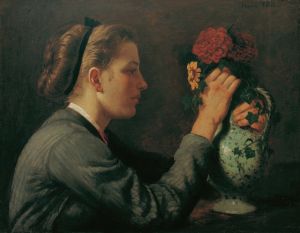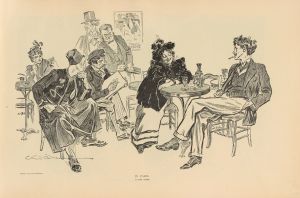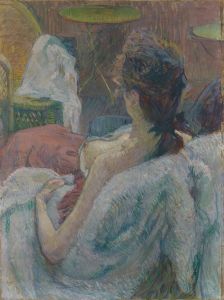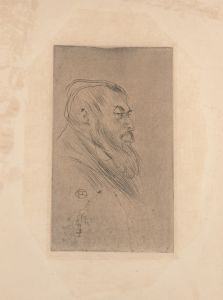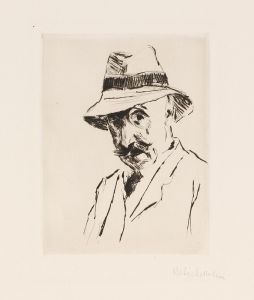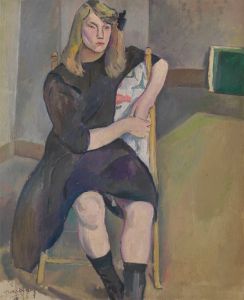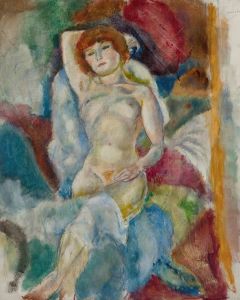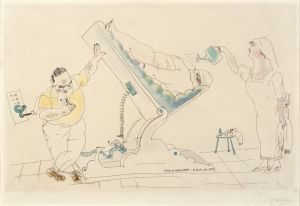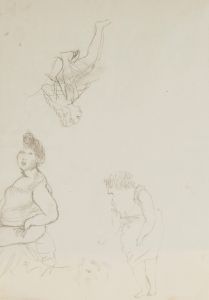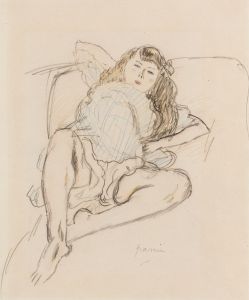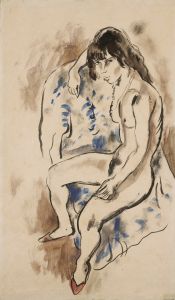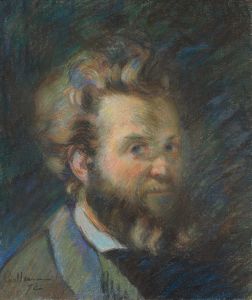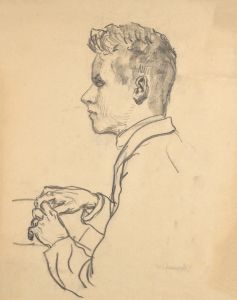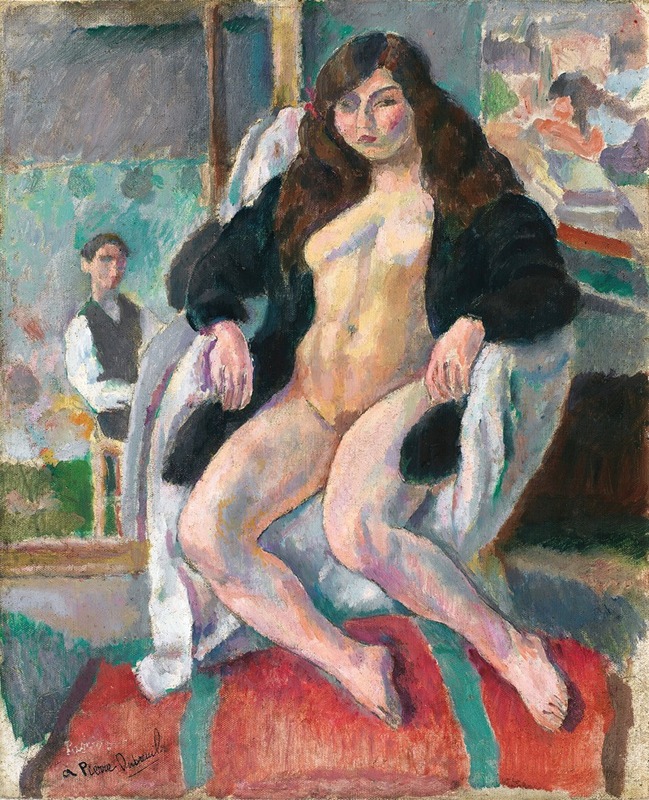
Le Peintre Et Son Modèle
A hand-painted replica of Jules Pascin’s masterpiece Le Peintre Et Son Modèle, meticulously crafted by professional artists to capture the true essence of the original. Each piece is created with museum-quality canvas and rare mineral pigments, carefully painted by experienced artists with delicate brushstrokes and rich, layered colors to perfectly recreate the texture of the original artwork. Unlike machine-printed reproductions, this hand-painted version brings the painting to life, infused with the artist’s emotions and skill in every stroke. Whether for personal collection or home decoration, it instantly elevates the artistic atmosphere of any space.
Jules Pascin, a Bulgarian-born artist who became a prominent figure in the early 20th-century art world, is known for his distinctive style and his depictions of intimate, often melancholic scenes. One of his works, Le Peintre et Son Modèle (The Painter and His Model), reflects his characteristic approach to capturing the human form and the dynamics of the artist-model relationship.
Pascin created this painting during his prolific career, which spanned several countries and artistic movements. He was associated with the École de Paris, a group of international artists working in Paris during the early 20th century. His work often blended elements of Impressionism, Fauvism, and Expressionism, resulting in a unique style that emphasized fluid lines, muted colors, and emotional depth.
Le Peintre et Son Modèle portrays a scene that was a recurring theme in art history: the interaction between an artist and their subject. In this painting, Pascin captures the intimacy and complexity of this relationship. The composition typically features a painter, presumably a representation of Pascin himself, alongside a model. The model is often depicted in a relaxed or contemplative pose, emphasizing the vulnerability and humanity of the subject. Pascin's use of soft, almost dreamlike brushstrokes and a subdued color palette lends the work a sense of quiet introspection.
The painting reflects Pascin's broader interest in the human condition, particularly the lives of women. Many of his works focus on female figures, often nude or semi-nude, portrayed with a sense of tenderness and psychological depth. Rather than idealizing his subjects, Pascin sought to depict them as real, complex individuals, capturing their emotions and inner lives.
Jules Pascin's life and career were marked by both critical acclaim and personal struggles. Born in 1885 in Vidin, Bulgaria, he moved to Paris in 1905, where he became part of the vibrant Montparnasse art scene. He gained recognition for his drawings and paintings, which were exhibited widely during his lifetime. However, Pascin also battled depression and alcoholism, struggles that ultimately led to his tragic death by suicide in 1930.
While specific details about Le Peintre et Son Modèle—such as its exact date of creation or current location—are not readily available, the painting remains an example of Pascin's ability to convey the nuances of human relationships through his art. His work continues to be celebrated for its emotional resonance and its contribution to the modernist movement.





